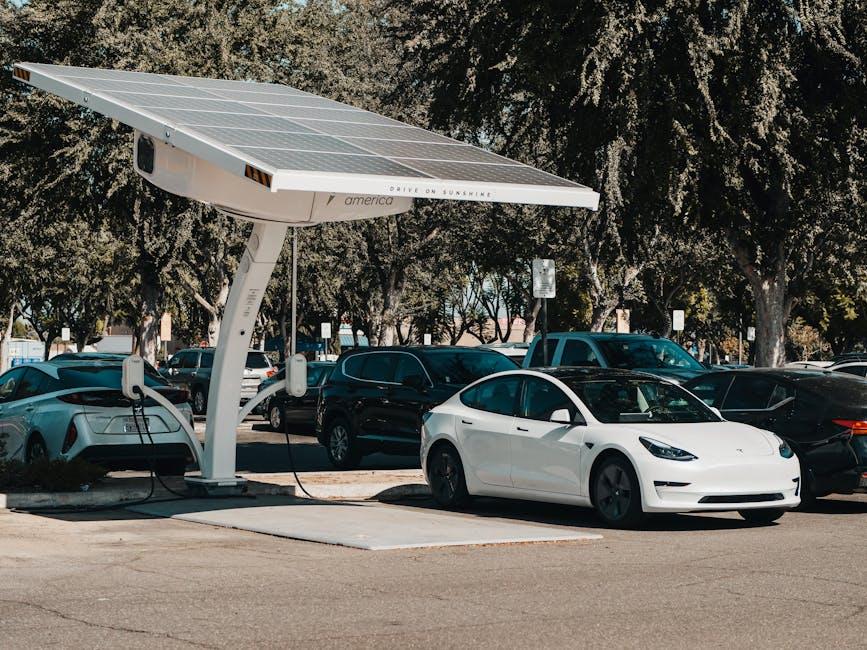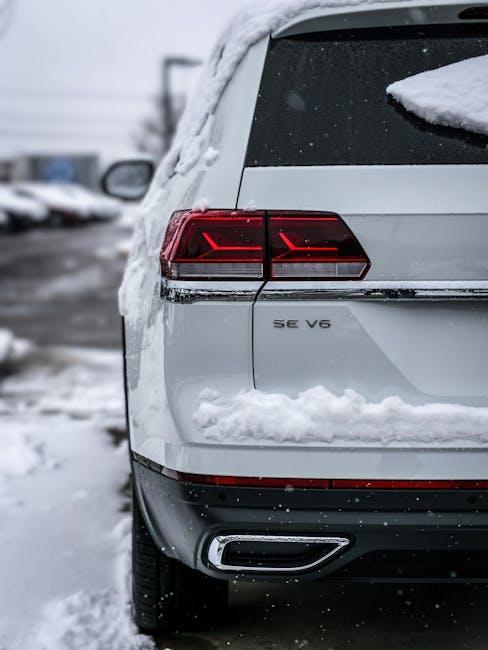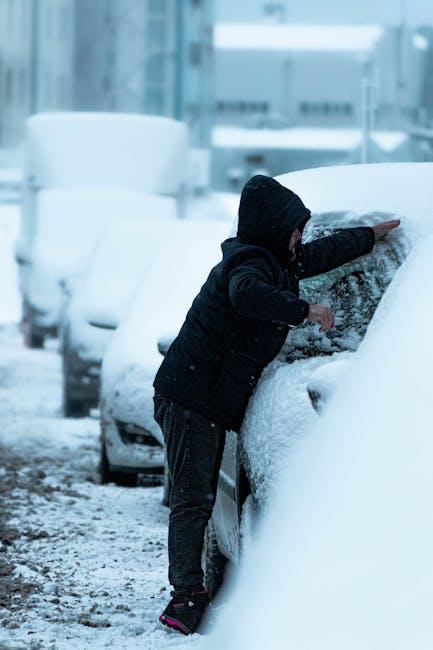As winter’s chill descends and roads become slick with ice and snow, the reliability of your vehicle transforms from a mere convenience to a crucial safeguard. At the heart of this reliability lies a component often overlooked until the moment you need it most: the battery. A good battery is not just a power source; it’s the lifeline ensuring your car starts, your lights shine bright, and your defrosters hum steadily against the biting cold. Understanding the role and importance of a quality battery during winter driving can turn potential roadblocks into smooth journeys, keeping you safe and connected when the temperature drops and the challenges mount.
Table of Contents
- The Role of Battery Health in Cold Weather Performance
- How Cold Temperatures Affect Battery Efficiency
- Signs Your Battery Needs Replacement Before Winter
- Choosing the Right Battery for Harsh Winter Conditions
- Maintenance Tips to Extend Battery Life During Winter
- Preparing Your Vehicle Battery for Winter Starts
- Q&A
- Key Takeaways

The Role of Battery Health in Cold Weather Performance
When temperatures dive, your vehicle’s battery faces a monumental challenge. Cold weather thickens engine oil and slows down chemical reactions inside the battery, making it harder to deliver the crucial cold cranking amps (CCA) needed to start your engine. A healthy battery, with a strong charge and well-maintained condition, provides consistent power output despite the chill, helping you avoid that frustrating moment of silence when turning the key on a frosty morning. Conversely, weakened batteries struggle, often resulting in slow starts or complete failure, leaving drivers stranded in harsh conditions.
To visualize how battery health impacts winter performance, consider the following table comparing voltage levels and starting capabilities:
| Battery State | Voltage (at 0°F) | Starting Reliability |
|---|---|---|
| Fully Charged & Healthy | 12.6 V | Excellent |
| Moderately Charged | 12.3 V | Fair |
| Weak or Older Battery | 11.8 V | Poor – Risk of No Start |
- Battery Maintenance Tips: Keep terminals clean and tight to ensure solid connections.
- Regular Testing: Measure voltage and CCA to monitor battery’s winter readiness.
- Timely Replacement: Swap out batteries older than three to five years, especially before winter hits.

How Cold Temperatures Affect Battery Efficiency
As temperatures drop, the chemical reactions within a battery slow significantly, leading to a decrease in its overall capacity and output. This reduction means your vehicle might struggle to start or deliver consistent power during those frigid winter mornings. A battery that performs well in warm weather might find itself working twice as hard to provide the same energy, putting extra strain on your vehicle’s electrical system. Components like the starter motor demand more current in cold conditions, which can quickly drain a weakened battery.
To ensure reliable performance, it’s important to understand the specific demands winter places on your battery:
- Reduced charge acceptance: Batteries recharge slower, making it harder to restore full power between short trips.
- Increased internal resistance: Leading to less efficient energy delivery.
- Voltage drop: Cold can cause the battery’s voltage to dip below optimal levels, affecting engine and accessory operation.
| Temperature (°F) | Battery Capacity (%) | Starting Power |
|---|---|---|
| 75 | 100 | Normal |
| 32 | 65 | Reduced |
| 0 | 40 | Severely Limited |
| -22 | 25 | Critical |

Signs Your Battery Needs Replacement Before Winter
As temperatures drop, your car’s battery faces greater challenges to maintain a strong charge and reliable performance. One of the earliest warning signs is sluggish engine cranking, especially during cold starts. If you notice your vehicle hesitating longer than usual before roaring to life, it’s a clear hint that your battery’s capacity is waning. Additionally, dimming headlights or interior lights may reveal that your battery can no longer supply consistent power, potentially leaving you stranded on a frosty morning.
Other visible indicators often go unnoticed but are equally important. Keep an eye out for corrosion build-up around battery terminals and any physical swelling or leaks on the battery case, which suggest internal damage. Unexplained electrical issues, such as malfunctioning dashboard gauges or erratic performance of electronic accessories, can also be subtle signs that your battery is begging for a replacement before the harsh winter months arrive.
- Slow engine start on cold mornings
- Dimming lights or flickering electronics
- Corrosion on battery terminals
- Battery case swelling or fluid leaks
- Dashboard warning lights
| Symptom | Cause | Winter Impact |
|---|---|---|
| Slow Starting | Reduced Battery Capacity | Longer Engine Crank Times |
| Corrosion | Acid Leakage or Moisture | Poor Electrical Connection |
| Dimming Lights | Voltage Drop | Visibility Issues at Night |

Choosing the Right Battery for Harsh Winter Conditions
Winter is unforgiving when it comes to vehicle batteries. Freezing temperatures significantly reduce a battery’s efficiency and cranking power, which means your car needs more energy to start the engine. Selecting a battery that’s designed to withstand extreme cold ensures your vehicle won’t leave you stranded in the dead of winter. Look for batteries with a high Cold Cranking Amps (CCA) rating, as this indicates better starting power in low temperatures. Additionally, batteries featuring low internal resistance and enhanced durability against corrosion are ideal for harsh winters.
When shopping for a winter-ready battery, consider the following features:
- Enhanced Plate Design: Thicker plates resist wear and withstand cold-induced stress longer.
- Low Self-Discharge: Maintains charge over extended periods of inactivity.
- Sealed Maintenance-Free Models: Prevent acid leaks and reduce maintenance during freezing conditions.
- Reliable Warranty: Indicates manufacturer confidence and longer battery life expectancy.
| Battery Type | Best Use | Winter Performance |
|---|---|---|
| Lead-Acid | General Use | Moderate |
| Absorbed Glass Mat (AGM) | Severe Winter Conditions | Excellent |
| Gel Cell | Extreme Cold and Vibration | Very Good |

Maintenance Tips to Extend Battery Life During Winter
To preserve your car battery’s health when temperatures drop, it’s essential to practice a few proactive habits. First, keep your battery clean by regularly removing corrosion around the terminals with a mixture of baking soda and water. This ensures optimal conductivity and prevents slow drain during long cold nights. Check your battery’s charge level often—cold weather can reduce battery capacity by up to 50%, so topping up with a suitable battery charger during prolonged periods of inactivity can work wonders. Additionally, parking in a garage or shaded area can help shield your battery from extreme cold snaps.
Winter also demands extra attention to your vehicle’s electrical load. To avoid overtaxing your battery, minimize the use of power-intensive accessories like heated seats, defrosters, and stereo systems before the engine starts. Schedule routine maintenance checks to ensure wiring is intact and battery connections remain tight. Below is a quick reference table highlighting key winter maintenance actions:
| Maintenance Task | Benefit |
|---|---|
| Terminal Cleaning | Improves charge flow |
| Charge Level Monitoring | Prevents unexpected failure |
| Garage Parking | Protects against freeze damage |
| Minimize Electrical Load | Reduces battery strain |

Preparing Your Vehicle Battery for Winter Starts
Ensuring your vehicle’s battery is in optimal condition before the first frost can save you from the frustration of unexpected no-starts. Cold weather significantly reduces a battery’s cranking power, so it’s essential to inspect terminals for corrosion, keep connections tight, and test the battery’s charge. A healthy battery withstands the cold better, providing reliable ignition during chilly morning starts. Regular maintenance also involves cleaning the terminals with a baking soda solution or commercial cleaner to remove buildup that might inhibit electrical flow.
Consider the following prep steps to enhance winter starting performance:
- Check battery voltage using a multimeter—healthy batteries typically read around 12.6 volts.
- Inspect for signs of wear such as cracks or bulges on the battery case.
- Ensure your battery is securely mounted to avoid vibration damage.
- Top off fluids in non-sealed batteries to maintain proper electrolyte levels.
| Winter Battery Tip | Benefit |
|---|---|
| Keep your battery clean | Better electrical flow |
| Regularly test charge levels | Avoid surprise failures |
| Use a battery warmer | Improved cold starts |
Q&A
Q&A: The Importance of a Good Battery for Winter Driving
Q1: Why is having a good battery crucial for winter driving?
A1: Winter puts extra strain on car batteries due to cold temperatures slowing down chemical reactions inside the battery. A strong, reliable battery ensures your vehicle starts smoothly despite the freeze, preventing those frustrating moments when your car refuses to turn over.
Q2: How exactly does cold weather affect a car battery’s performance?
A2: Cold weather thickens engine oil and reduces the battery’s ability to generate electrical current. At 0°F, a fully charged battery can lose about 60% of its power, making it harder to crank the engine. This means a weak or old battery might not have enough juice to get you going.
Q3: Can I just use any battery during winter, or is there a specific type I should look for?
A3: While any battery can technically work, choosing one with a high Cold Cranking Amps (CCA) rating is key. CCA indicates a battery’s ability to start your car in cold conditions—a higher number means better performance. Look for batteries designed or rated for cold climates for optimal reliability.
Q4: How can I tell if my battery is ready to handle the winter months?
A4: Signs include slow engine cranking, dim headlights, and corrosion around battery terminals. It’s a smart move to have your battery tested before winter hits—many auto shops offer free battery health checks to ensure it’s up to the challenge.
Q5: What maintenance tips help extend battery life through harsh winters?
A5: Keep battery terminals clean and tight, avoid leaving lights or accessories on when the engine is off, and make sure your car is driven regularly to recharge the battery. If you live in extremely cold areas, consider a battery blanket or insulated cover to keep it warm.
Q6: Is it worth investing in a premium battery just for winter?
A6: Absolutely. While premium batteries might cost more upfront, their enhanced cold-weather performance and long-term durability can save you time, trouble, and money—especially during those unpredictable winter mornings when every second counts.
Q7: Besides the battery, what else should I inspect for winter readiness?
A7: Don’t overlook the starter, alternator, and electrical connections—all play roles in reliable starting power. Also, ensure your vehicle’s fluids, tires, and heating system are winter-ready to complement a dependable battery and keep your journey safe and warm.
Having a tough battery is like having a steadfast companion in winter’s chill, ready to roar to life whenever you need it. Don’t let a faltering battery leave you out in the cold—prepare wisely and drive confidently.
Key Takeaways
As the cold winds blow and the roads grow slippery, your car’s battery becomes more than just a component—it’s the heartbeat that keeps your journey alive. Investing in a good battery isn’t merely about convenience; it’s about safety, reliability, and peace of mind when winter’s harshest moments arrive. So this season, as temperatures drop and the nights grow longer, let your battery be the steadfast partner that powers you through winter’s challenges, ensuring every drive is one you can count on.

